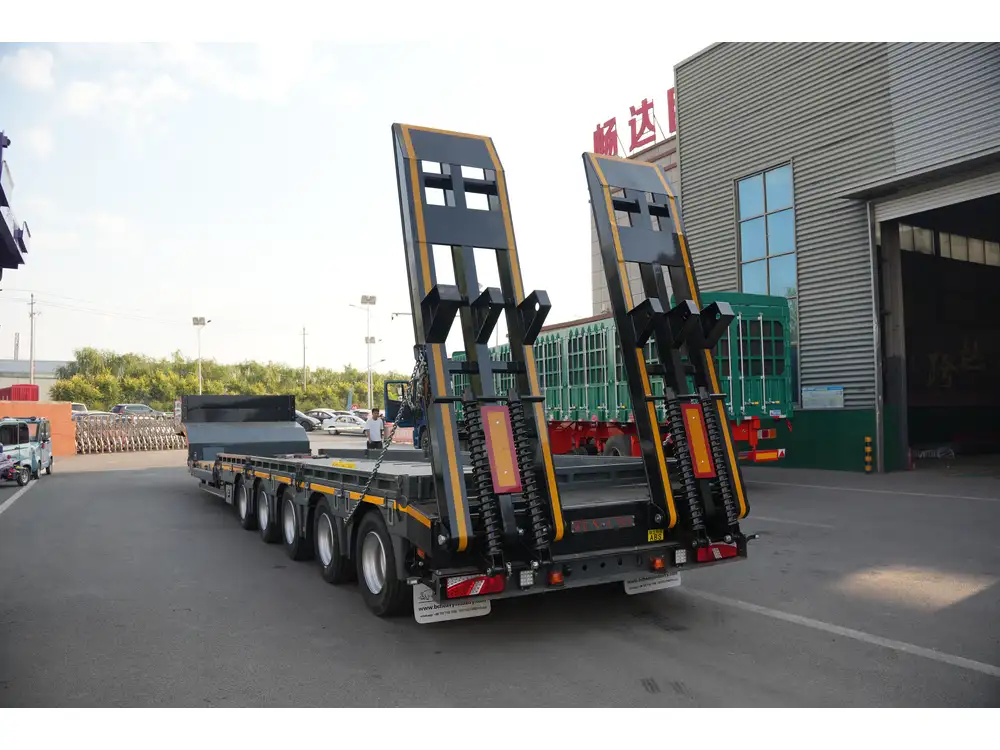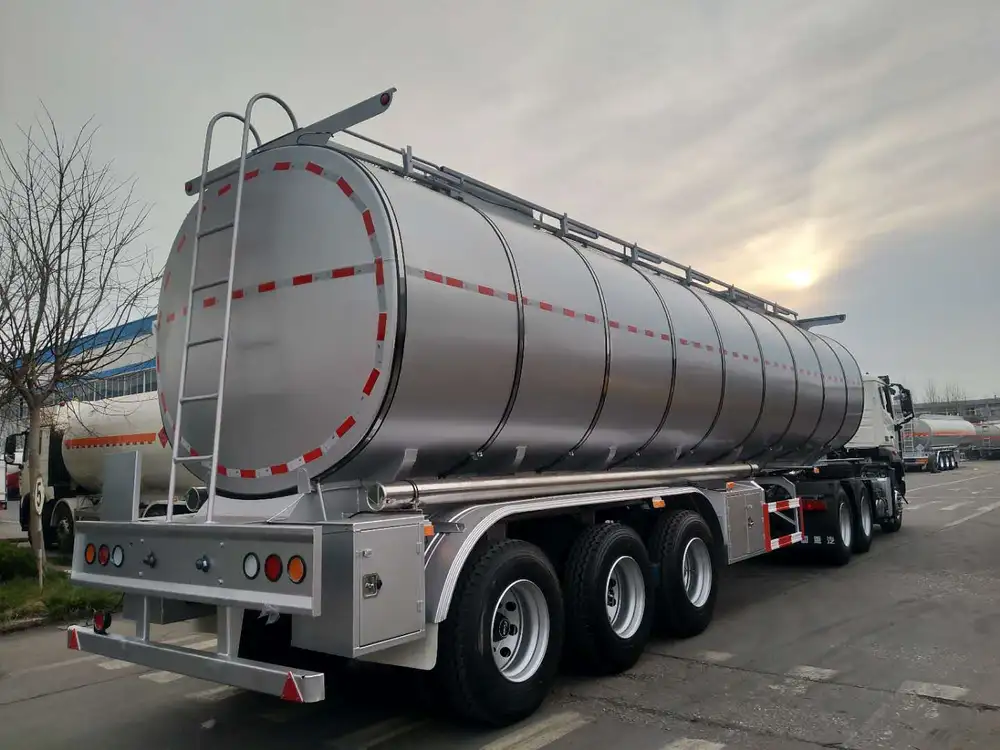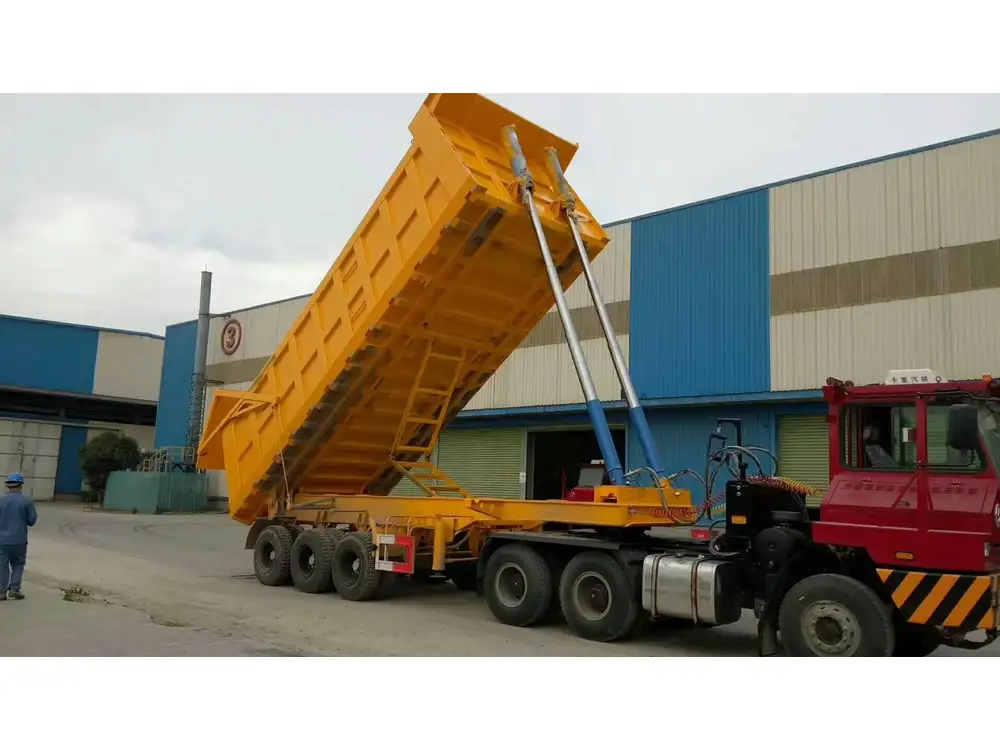When it comes to understanding the logistics of commercial transport, a critical question arises: how much does a semi truck trailer weigh? Weight plays a pivotal role in various aspects of the trucking industry, including load capacity, fuel efficiency, compliance with regulations, and overall safety. This article delves into the intricacies of semi truck trailer weights, offering insights into types of trailers, weight classifications, and implications for transport professionals.
Understanding Semi Truck Trailer Types and Their Weights
1. Flatbed Trailers
Flatbed trailers are versatile and commonly used for transporting heavy, oversized loads. These trailers have no sides or roof, allowing for flexibility in loading:
| Trailer Type | Typical Weight Range |
|---|---|
| Lightweight Flatbed | 4,000 – 6,000 lbs |
| Standard Flatbed | 7,000 – 9,000 lbs |
| Heavy-duty Flatbed | 10,000 – 15,000 lbs |

2. Enclosed Trailers
Enclosed trailers, or box trailers, provide protection from the elements, making them ideal for fragile commodities. They are heavier than flatbeds due to their construction:
| Trailer Type | Typical Weight Range |
|---|---|
| Lightweight Enclosed | 5,000 – 8,000 lbs |
| Standard Enclosed | 8,000 – 10,000 lbs |
| Heavy-duty Enclosed | 10,000 – 15,000 lbs |
3. Reefer Trailers
Reefers (refrigerated trailers) are essential for transporting perishable goods. Their construction includes insulation and cooling systems, adding significant weight:
| Trailer Type | Typical Weight Range |
|---|---|
| Lightweight Reefer | 9,000 – 11,000 lbs |
| Standard Reefer | 11,000 – 13,000 lbs |
| Heavy-duty Reefer | 13,000 – 16,000 lbs |
4. Tanker Trailers
Tanker trailers are designed for transporting liquids, including fuel and chemicals. Their weight can vary significantly based on the material and capacity:
| Trailer Type | Typical Weight Range |
|---|---|
| Lightweight Tanker | 8,000 – 12,000 lbs |
| Standard Tanker | 12,000 – 15,000 lbs |
| Heavy-duty Tanker | 15,000 – 20,000+ lbs |

5. Lowboy Trailers
Lowboy trailers, utilized for transporting heavy equipment due to their low profile, also have varying weights:
| Trailer Type | Typical Weight Range |
|---|---|
| Lightweight Lowboy | 10,000 – 15,000 lbs |
| Standard Lowboy | 15,000 – 20,000 lbs |
| Heavy-duty Lowboy | 20,000 – 30,000 lbs |
Factors Influencing Semi Truck Trailer Weight
Understanding how much a semi truck trailer weighs requires knowledge about several influential factors:
1. Construction Materials
The materials used in trailer construction—such as steel, aluminum, and composite materials—significantly affect weight. For instance, aluminum trailers are typically lighter than their steel counterparts.

2. Design and Features
Trailers equipped with additional features (e.g., hydraulic lift gates, extra axles, or specialized building materials for specific cargo) will weigh more. The inclusion of these features should be considered when calculating the total weight.
3. Utility and Capacity
Following payload limits set by the Federal Motor Carrier Safety Administration (FMCSA) is crucial. Payload capacity can influence the design, thereby affecting weight. Manufacturers often provide specific weight capacities for each trailer model.
4. Accessories and Modifications
Accessories, such as tie-downs, storage boxes, and additional axles, can all add to the overall weight. Modifying a trailer can push its weight beyond standard specifications, affecting its utility and legal compliance.

Understanding Legal Weight Limits
1. Federal Limits
The FHWA (Federal Highway Administration) stipulates weight limits for semi truck trailers operating on interstate highways. The overall weight limit for a tractor-trailer combination is typically 80,000 pounds. This total includes:
- Truck weight: Usually weighs around 20,000-30,000 lbs depending on the truck model and configuration.
- Trailer weight: Depending on type, can range from 4,000 to over 30,000 lbs.
- Cargo weight: Variable, depending on what is being transported.
2. State Regulations
States can implement specific weight regulations that might differ from federal standards, including bridge laws. Bridge laws govern the weight distribution across axles to prevent roadway damage.
| State | Max Gross Weight | Single Axle | Tandem Axle |
|---|---|---|---|
| California | 80,000 lbs | 20,000 lbs | 34,000 lbs |
| Texas | 80,000 lbs | 20,000 lbs | 34,000 lbs |
| New York | 80,000 lbs | 20,000 lbs | 34,000 lbs |

The Importance of Weigh Stations
Weigh stations play a vital role in ensuring compliance with weight regulations. These facilities monitor:
- Safety: Overloaded vehicles pose risks to drivers and others on the road.
- Infrastructure protection: Excessive weight can cause road and bridge damage.
- Fair competition: Ensuring all transport operators adhere to the same weight regulations.
When approaching a weigh station, drivers should be prepared for a quick inspection that includes:
- Verification of paperwork: Cargo manifests and licensing.
- Weight measurement: Ensures compliance with local regulations.
- Safety checks: Inspecting the physical condition of both the truck and trailer.
Calculating Your Semi Truck Trailer’s Weight
Accurate weight calculations are essential for transport operations. Here are the steps to follow:
Step 1: Gather Specifications
Collect the manufacturer’s specifications for both the semi-truck and the trailer. This information is typically found in the owner’s manual or on the manufacturer’s website.

Step 2: Calculate the Gross Combined Weight
Gross Combined Weight (GCW) is the total weight of the truck, trailer, and cargo combined.
[ \text{GCW} = \text{Truck Weight} + \text{Trailer Weight} + \text{Cargo Weight} ]Step 3: Subtract the Truck Weight
To determine the weight of just the trailer, subtract the truck weight from the GCW:
[ \text{Trailer Weight} = \text{GCW} – \text{Truck Weight} ]Step 4: Verify with a Certifiable Scale
For accuracy, weigh the fully loaded trailer at a certified scale. This offers peace of mind that you are adhering to federal and state weight limits.

Implications of Weight on Transportation Efficiency
Understanding trailer weight impacts various areas of transport:
1. Fuel Consumption
Heavier loads require more energy to move, thereby increasing fuel consumption. Calculating the weight of the trailer can help fleet managers optimize routes for efficiency.
2. Wear and Tear
Exceeding weight limits can lead to premature wear and maintenance issues, such as:
- Brake wear: Heavier loads require increased braking force.
- Tire damage: Overloading can lead to tire blowouts and uneven wear.
- Suspension strain: Excess weight affects the suspension system’s longevity.

3. Safety Compliance
Adhering to weight regulations is not merely a legal obligation—it’s a safety imperative. Ensuring the trailer is within legal weight limits mitigates accidents and injuries, protecting your drivers and the general public.
4. Operational Costs
Operational costs can escalate quickly with fines from exceeding weight limits. Understanding how much a semi truck trailer weighs can assist in minimizing unnecessary expenses.
Conclusion
In navigating the transportation sector, comprehending the weights of semi truck trailers is not just an academic exercise—it’s a fundamental aspect of efficient, legal, and safe operations. Whether choosing a flatbed, reefer, or lowboy, the total weight impacts every facet, from legal compliance to fuel usage. Operators who thoroughly understand these intricacies can optimize their logistics chain, ensuring their fleet operates at peak efficiency. By adhering to regulations, keeping abreast of the latest standards, and investing in proper training, companies not only serve their client bases better but also contribute to a safer logistics environment overall.



